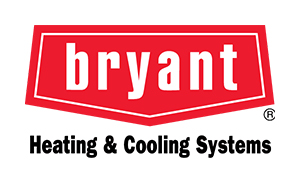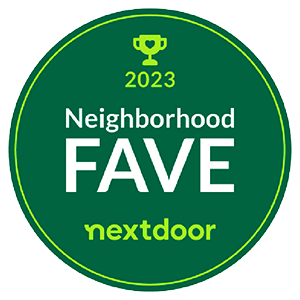In most U.S. households, heating and cooling expenses make up about 40 to 50% of energy consumption costs. With such a strong opportunity to save money with greater efficiency, many homeowners are looking to emerging and future smart home technologies. If you’re planning to upgrade or replace an HVAC system in the near future, keep an eye on the following industry advances.
Variable Refrigerant Flow
Heat pumps and air conditioners can benefit from the emergence of variable refrigerant flow (VRF) systems. Traditionally, an HVAC system operates in either an on or off condition. This leads to lots of inefficiency because the system has to kick on at full energy consumption to heat or cool your house. VRF solutions, however, can get to your target temperature and then use a slow flow of heated or cooled refrigerant to maintain that temperature. This provides steadier heating and cooling, achieving greater efficiency and comfort.
Combined with smart technologies, VRF offers very precise control. By combining VRF and a type of thermostat we sell that uses smart technology like machine learning, you can maintain an interior temperature within one degree of your target.
AI and Machine Learning
AI and machine learning are major areas of HVAC innovation. Better monitoring and automated adjustment promise to make HVAC systems vastly more efficient. Likewise, these improvements will extend the service lifespans of most HVAC systems.
Adaptive Learning
Adaptive learning is among the core smart home functions for HVAC systems. An adaptive learning system uses a combination of sensors and a smart thermostat to record how you prefer to adjust your system. Smart technologies can learn your patterns over a couple of weeks, developing a sense of when you turn the temperature up or down. It will notice that you turn down the temperature in the main living area and warm up the master bedroom right before you go to sleep, for example.
Once the system is trained, it can adapt to conditions based on your patterns. It will handle the job automatically, so you don’t have to. If you make corrections, the system will also note those and incorporate them into its routine.
Over a year, the system will develop a strong sense of how you use your HVAC system seasonally. It will see how you respond to different outdoor conditions and adjust the thermostat accordingly. Some models even have a humidistat and can automatically adjust the humidity level. Some models track the weather forecast and anticipate what your preferences will be as conditions change.
Predictive Maintenance
One of the biggest benefits of smart technology is predictive maintenance. Some systems use machine learning and company data to predict when an HVAC system will be due for heating or AC maintenance. The system monitors details like total run times and HVAC cycles to determine how much heating and cooling have been in use. It can then send you a report when maintenance is close to due. This allows you to schedule appointments with our technicians so we can tune your HVAC system, replace worn parts, and test systems.
Predictive maintenance is especially good at extending the potential lifespan of an HVAC system. For example, detecting that a compressor is failing could potentially save thousands of dollars on other parts of the HVAC system. This is because a straining compressor also strains other components. By limiting wear and tear from parts that are past needing replacements, predictive maintenance can save money on the rest of your HVAC system.
Grid Integration
Many utility providers now offer real-time pricing information across a standardized protocol. Some smart thermostat models can connect to servers over this protocol to see what the utility company says rates are now and will be later in the day. This allows a smart thermostat to target heating and cooling for the optimal times to save you money.
On a hot day, for example, your electric company might implement higher rates to discourage overuse. Conversely, they may also offer lower rates at night when demand falls off its peak. A smart thermostat that supports grid integration can target more air conditioning cycles for the time with lower electricity rates. In addition to being cost-effective, this also encourages grid stability.
Integration with Home Automation
Integrating an HVAC system with other smart home systems can lead to low-cost solutions for heating and cooling. Some smart HVAC technologies can communicate with smart home systems to tell them to adjust curtains and blinds. For example, your HVAC system might pass along a message to close the blinds on the sun-facing side of your house on a hot day. This can significantly lower cooling costs by using a simple solution.
Sensors
A smart home has to have some degree of situational awareness. That is where sensors enter the picture. Sensors can feed a wide range of data to an HVAC system and a thermostat, allowing your home’s system to respond better to changing conditions.
Occupancy Sensors
Occupancy sensors allow an HVAC system to know how many people are present in a room. If you have a big get-together indoors during the summer, the sensors can relay the information to the thermostat. The thermostat can then push a little more cooling to account for the presence of more people. When combined with technologies like VRF, this can create a comfortable environment while people cook and hang out.
Indoor Air Quality
Sensors are also available to monitor indoor air quality. When connected to ventilation and air purification systems, these sensors allow an HVAC system to increase airflow dynamically to clean the air.
Additional Temperature and Humidity Sensors
Spreading more sensors throughout your house provides more information. This can be useful for delivering more balanced heating and cooling. Especially with the rise of HVAC zones, additional temperature and humidity sensors allow an HVAC system to address needs more specifically throughout your house.
HVAC Zoning
HVAC zones are nothing new, but modern smart technologies are making zones better than ever. Some systems can control dampers, fans, and blower motors to target different parts of your house with more or less heating and cooling.
You can configure zones based on a variety of needs. Suppose your home’s upstairs tends to get less airflow than the downstairs. The zonal HVAC system can send more airflow upstairs to ensure that those rooms are equally heated or cooled. Another common configuration is to have zones for the sunnier and shadier sides of a house.
Honest Home Services LLC is a family business that puts honesty and customer relationships first. Nextdoor has even named our business a Neighborhood Fave. We put more than 20 years of combined experience to work on HVAC projects, and you can ask us for help installing, repairing, or maintaining a heating or cooling system. We are also happy to discuss indoor air quality concerns. Whether you’re a residential or commercial customer, our HVAC technicians will work hard for you.
If you’re looking for a company serving Flower Mound, TX that understands the latest smart HVAC technologies, schedule a consultation with Honest Home Services LLC today.


